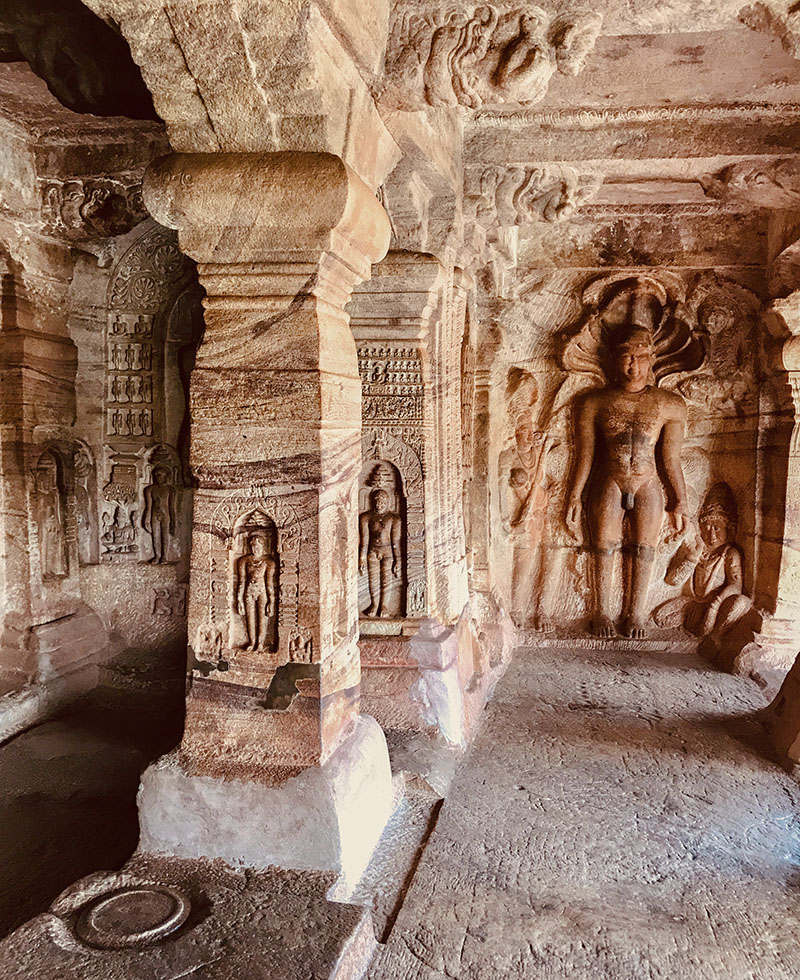ARTICLE
Badami Cave 4
On a pedestal carved into the back wall of the garbhagriha is Mahavira seated on a lion throne in paryankasana under the three tiered mukkode umbrella. Flanking him are chamaradharas (fly-whisk bearers) and a hovering vidhyadhara couple. In the antechamber wall is a sculpture of the first Tirthankara, Adinatha, standing in the stiff renunciatory kayotsarga pose, with his long matted locks falling to his shoulders. He is flanked by twelve Tirthankaras in panels of varying sizes. The end walls of the ardhamandapa are carved with images of Mahavira, much like the one in the sanctum, but are additionally flanked by the yaksha and yakshi spirits Matanga and Siddhayika. The pilasters also bear reliefs of Jinas. On either side of the mukhamandapa are reliefs of Bahubali, identified by the creepers entwined around his legs; and Parshvanatha, identified by the serpent hoods over his head. All these figures are ‘sky-clad’ or digambara, carved in deep relief with a prabhamandala behind their heads. In a small panel on the western edge of the porch is a relief depicting the monk Jakkave supplicating a seated jina, thought to be Mahavira.
Besides these main reliefs are carvings of other Tirthankaras such as Indrabhuti Gautama; the female monks Brahmi and Sundari, and yaksha/yakshi spirits associated with the Jinas, such as Padmavati.
The size and dramatic scope of the Bahubali and Parshvanatha sculptures is similar to those of Cave 3, a significant change from the sculptural idiom seen in Cave 1. Unlike their enframed antecedents, the sculptures are more seamlessly integrated into the architectural setting, breaking down the barrier between the viewer and the deity.
Bibliography
Our website is currently undergoing maintenance and re-design, due to which we have had to take down some of our bibliographies. While these will be re-published shortly, you can request references for specific articles by writing to hellomapacademy@map-india.org.











